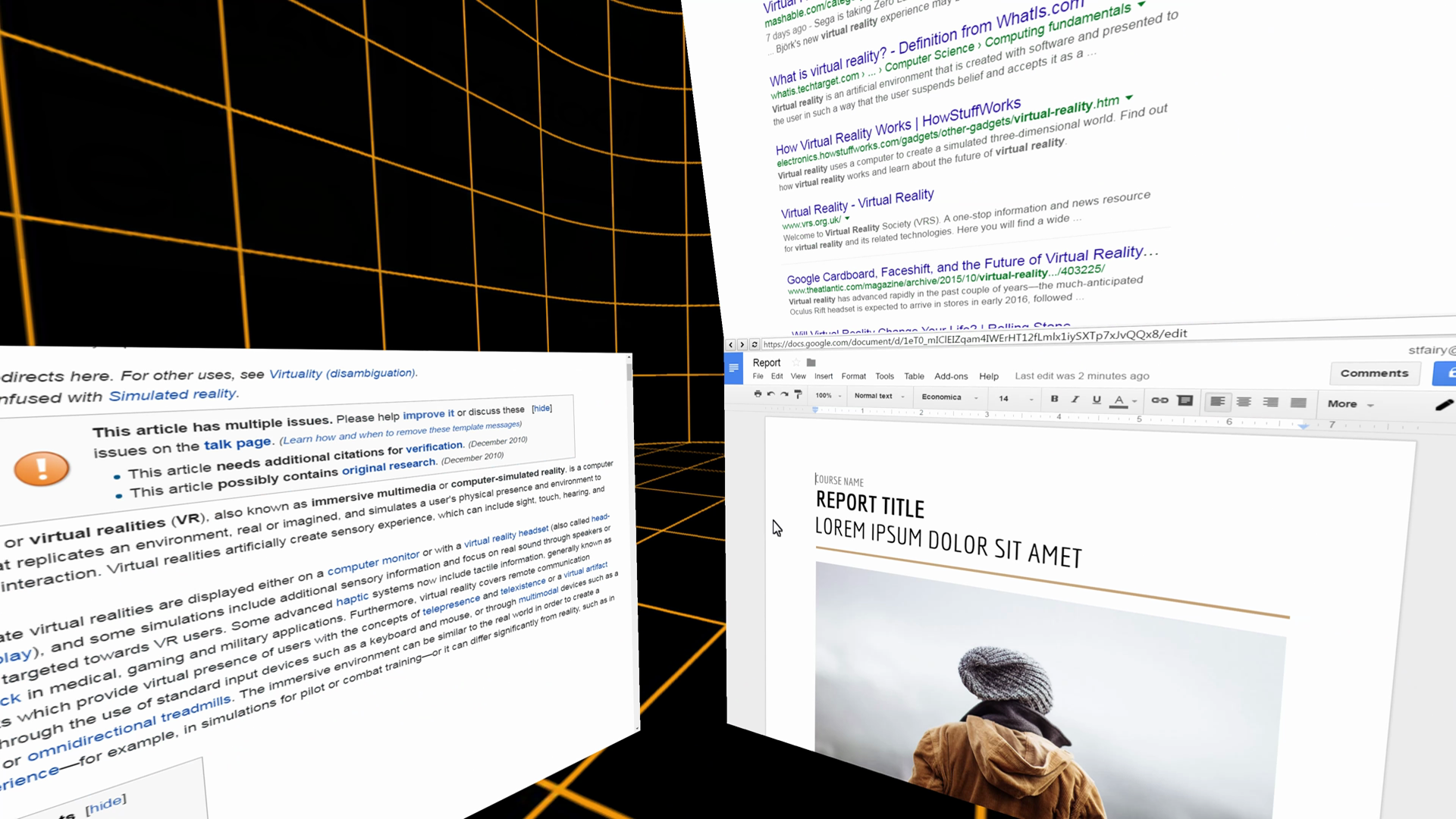 NEWS
NEWS
 NEWS
NEWS
 NEWS
NEWS
As virtual reality headsets slowly come to market they have presented themselves primarily as a new vehicle for entertainment: VR movies and video games. However, another market has already begun to emerge where developers are approaching VR for work. With this in mind Pygmal Technologies announced the release of the SPACE VR platform for work and not just play.
The SPACE VR beta is an application for Windows and is compatible with Oculus Rift and HTC Vive headsets. The software provides a virtual space in VR that allows users to open up six windows (acting as virtual monitors) that can be arranged as the user sees fit—this number will increase from six to unlimited during the final release.
Third-party programs will also be able to render 3D images into the virtual space for visualization. This means that aside from providing a virtual multiple-monitor setup, it will be possible to have an actual virtual desk to manipulate 3D objects and visualizations. If anything this is a huge upgrade over one or even multiple screens set up on a real world desk.
“As a software engineer, I use two 24-inch monitors daily at work, but I wish I could have two more of them,” explains Xiao Jia, CEO and creator of SPACE. “I have tens of files I use at a time and switch between them. I thought that there had to be a better way and loved the idea of making VR appropriate for in-office use cases. We designed SPACE to provide the most optimal work experience possible. With just the VR platform and compatible goggles, users can work in the VR world–no more cluttered multiple windows and multiple large monitors required.”
Another benefit of virtual reality environments is that the user can be whisked away to a totally different place. Not interested in staring at the walls of a cubicle? How about working on the top of Mt. Everest, or in the midst of an empty café with a view of the Eiffel Tower, or deep underwater surrounded by glowing fish…
SPACE VR allows third-party applications (web or native) to stream data (e.g. 360-degree video) to the background in a flexible way. This means that users can readily manipulate their environments to whatever third-party developers can design and imagine.
Downloads for the beta are available from the SPACE VR platform website. The beta is free; when the beta ends, the final release will be sold at a very low cost (or even free) for non-commercial use. There will be licenses sold for commercial use.
Do you want to work in outer space? SPACE VR can do that — just set up your monitors with the stars glowing against the darkness, and just soak in the edge-on view of a spiral galaxy while you edit documents. Image courtesy of SPACE.
The SPACE VR platform boasts a number of differences from current desktop apps designed for virtual reality, but it’s not alone.
To date, multiple VR desktop apps have been released or gone into beta that allow users to open up virtual screens in order to do work. For examples check out Virtual Desktop 1.0 and BigScreen (in beta) on SteamVR as well as the hardware-software combo of the Marvel headset, which recently finished a successful Indigogo campaign.
Virtual spaces are currently the undiscovered country of user interface and user experience. With the release of the Oculus Rift and HTC Vive, and upcoming release of the PlayStation VR, as well as mobile VR headsets and other devices, there is an ever-swelling market and audience for VR. Although it has not yet seen major adoption for work, it’s clear that products such as SPACE VR will outline what functions and what does not for VR at work.
For someone who sits in front of a computer all day, with a static screen (or set of screens), a virtual environment could provide a huge number of benefits. An array of six monitors is expensive and difficult to set up—in a virtual space, an array of fully customizable virtual monitors cost nothing extra.
Virtual reality and applications such as this could change the way people work.
Support our open free content by sharing and engaging with our content and community.
Where Technology Leaders Connect, Share Intelligence & Create Opportunities
SiliconANGLE Media is a recognized leader in digital media innovation serving innovative audiences and brands, bringing together cutting-edge technology, influential content, strategic insights and real-time audience engagement. As the parent company of SiliconANGLE, theCUBE Network, theCUBE Research, CUBE365, theCUBE AI and theCUBE SuperStudios — such as those established in Silicon Valley and the New York Stock Exchange (NYSE) — SiliconANGLE Media operates at the intersection of media, technology, and AI. .
Founded by tech visionaries John Furrier and Dave Vellante, SiliconANGLE Media has built a powerful ecosystem of industry-leading digital media brands, with a reach of 15+ million elite tech professionals. The company’s new, proprietary theCUBE AI Video cloud is breaking ground in audience interaction, leveraging theCUBEai.com neural network to help technology companies make data-driven decisions and stay at the forefront of industry conversations.